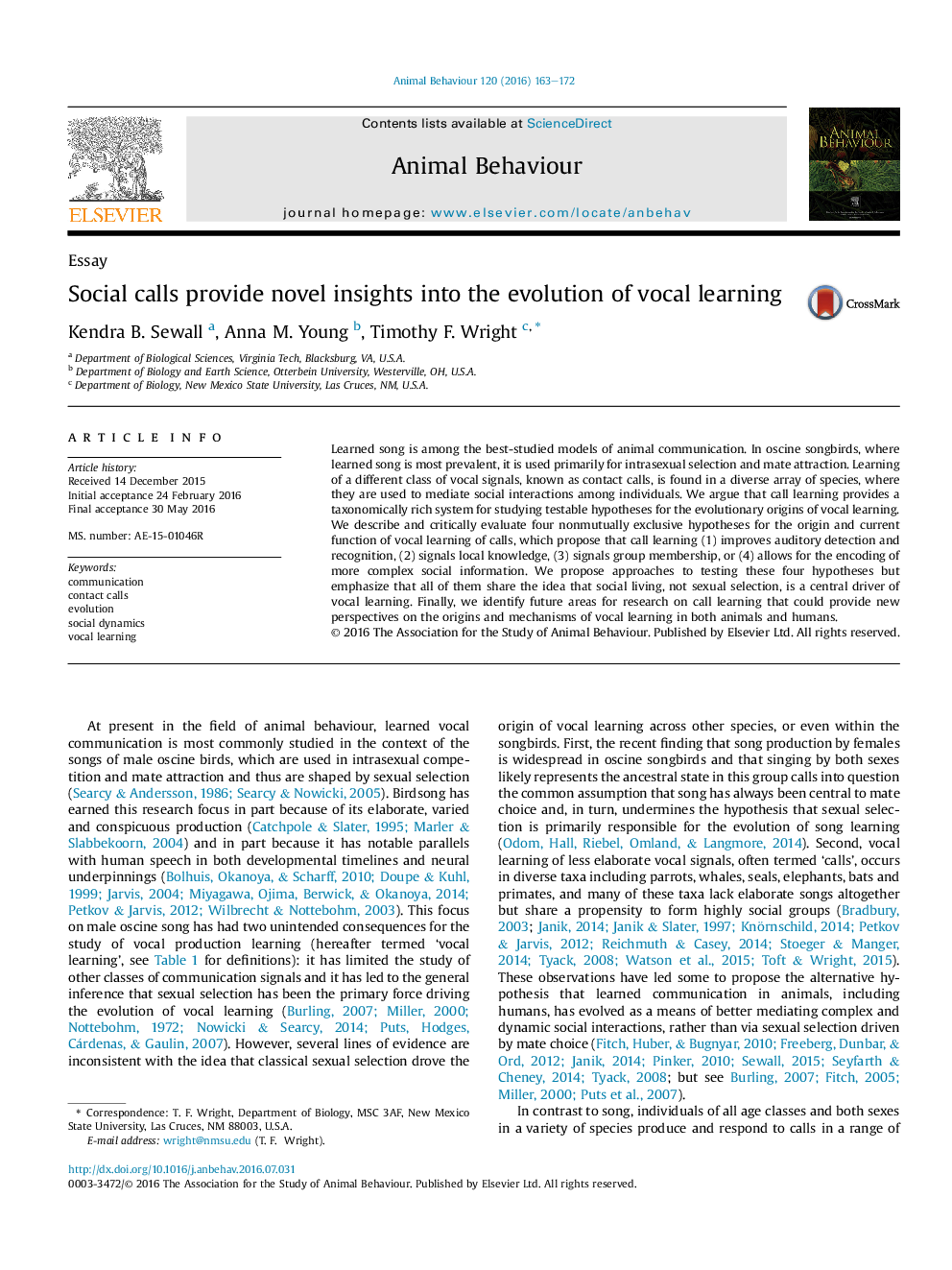| کد مقاله | کد نشریه | سال انتشار | مقاله انگلیسی | نسخه تمام متن |
|---|---|---|---|---|
| 2416206 | 1552208 | 2016 | 10 صفحه PDF | دانلود رایگان |
• Learning of social calls is more common among birds and mammals than song learning.
• Unlike song learning, call learning is not well explained by sexual selection.
• We examine hypotheses for the origin and maintenance of call learning.
• Learned calls give new insight into the evolution and mechanisms of vocal learning.
Learned song is among the best-studied models of animal communication. In oscine songbirds, where learned song is most prevalent, it is used primarily for intrasexual selection and mate attraction. Learning of a different class of vocal signals, known as contact calls, is found in a diverse array of species, where they are used to mediate social interactions among individuals. We argue that call learning provides a taxonomically rich system for studying testable hypotheses for the evolutionary origins of vocal learning. We describe and critically evaluate four nonmutually exclusive hypotheses for the origin and current function of vocal learning of calls, which propose that call learning (1) improves auditory detection and recognition, (2) signals local knowledge, (3) signals group membership, or (4) allows for the encoding of more complex social information. We propose approaches to testing these four hypotheses but emphasize that all of them share the idea that social living, not sexual selection, is a central driver of vocal learning. Finally, we identify future areas for research on call learning that could provide new perspectives on the origins and mechanisms of vocal learning in both animals and humans.
Journal: Animal Behaviour - Volume 120, October 2016, Pages 163–172
